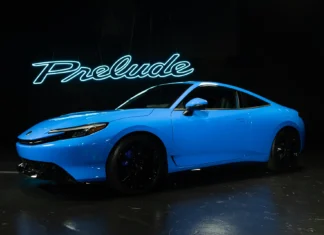The continuously variable transmission in the new 2016 Scion iM is touted by the company as being “sport tuned for driving pleasure,” at least that’s what they said in a press release. But does it really deliver, and how does it compare to the six-speed manual transmission?
I recently tagged along on a TFLcar video shoot and had an opportunity to drive the CVT and six-speed manual versions back-to-back around the IMI Motorsports Park track. The cars were basically identical, except for the color and the transmission – the CVT car was blue, the manual car was silver.
6-Speed Manual Transmission
First up was the silver manual. The first thing I noticed about the iM is that it seemed much smaller than other cars in the compact class. Interior room was a little tight, but I was able to get a comfortable driving position.
The manual’s clutch takeup is high but easy to modulate. The six-speed shifter has long throws but it’s reasonably accurate in normal driving. Once on the track, though, even at moderate speeds, the iM’s shortcomings started to show through.
When rushed, the transmission loses a lot of its accuracy. Fast second-to-third shifts were met with an unsatisfying “clunk.” But the biggest problem with the iM’s sporting pretensions is the pedal placement. The gas pedal is to low for any type of heel-and-toe shifting. The poor pedal placement sapped a lot of the fun out of driving the iM, as it can’t overcome its economy car roots. It shouldn’t be too difficult to build an economical car with good pedal placement – Mazda and Honda already do.
That’s a shame, because otherwise it’s not a bad car to drive. The steering lacked feel, but it put the car where I wanted it and overall it felt lively and nimble. The independent rear suspension helps a lot, too, as does keeping the car in second gear for most of the tight one-mile track.
CVT Transmission
Stepping out of the silver car and into the blue car with the CVT, the first thing I noticed was that the shift pattern for the manual gear mode was backwards for sporting driving – forward was upshift and back was downshift. Some companies – Mazda, BMW, Fiat-Chrysler – get this right. Scion – and Toyota – still haven’t.
Once under way, the CVT iM didn’t have nearly the peppiness of the manual car, even with the car in sport mode and using the manual shift gate. The engine took a long time to rev up and it didn’t have the immediacy of the manual.
Using the shift gate, the CVT moves through the pre-selected gear ratios almost as if it were a regular transmission, but the throttle response still feels CVT numb. Even so, this isn’t the auto iM’s Achilles’ heel. It’s biggest problem is weight.
The CVT iM weighs 88 pounds more than the manual and the weight is all up front. Around corners, where the manual iM felt lively, the CVT just pushed. Understeer was prodigious, even at moderate speeds. The manual exhibited no such behavior. The only thing that saved the CVT iM from being a total bore was the rear suspension. I felt the back end swing around nicely a few times, something that only an independent suspension could do.
While the CVT may be more convenient for every day use – and will probably get the lion’s share of iM sales – it just can’t match the manual when things get sporty. The extra weight and the typical poor CVT throttle response just overwhelm the 137 horsepower, 1.8-liter four cylinder.
Neither car is particularly fun to drive, but I would choose the manual version of the Scion iM over the CVT any day. The extra one mile per gallon isn’t worth the extra money and weight – the manual iM is rated at 27 mpg city, 36 mpg highway and 31 combined, while the CVT is rated at 28 mpg city, 37 mpg highway and 32 mpg combined.
Stay tuned for the full video review of the 2016 Scion iM manual and CVT, but for now, check out this first-drive video of the iM:























